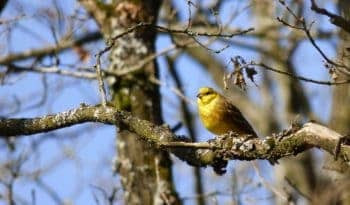The Kennedy Wild Bird Food Guide to the Yellowhammer
The yellowhammer bird is a beautiful bunting bird that can be identified by its unique yellow chest. In this A-Z bird guide, we take a look at some of the most interesting yellowhammer bird facts, including where you can find them, what to feed a yellowhammer and the facts around the bird’s Red List status. Take a look.What does a yellowhammer look like?
This yellow bunting bird is distinctively yellow from its head down, including most of its underparts. However, female yellowhammers are much paler than the male yellowhammer. All yellowhammers have a brown back with darker brown patches and streaks. Take a look at our yellowhammer bird images below to see if you can identify one!

